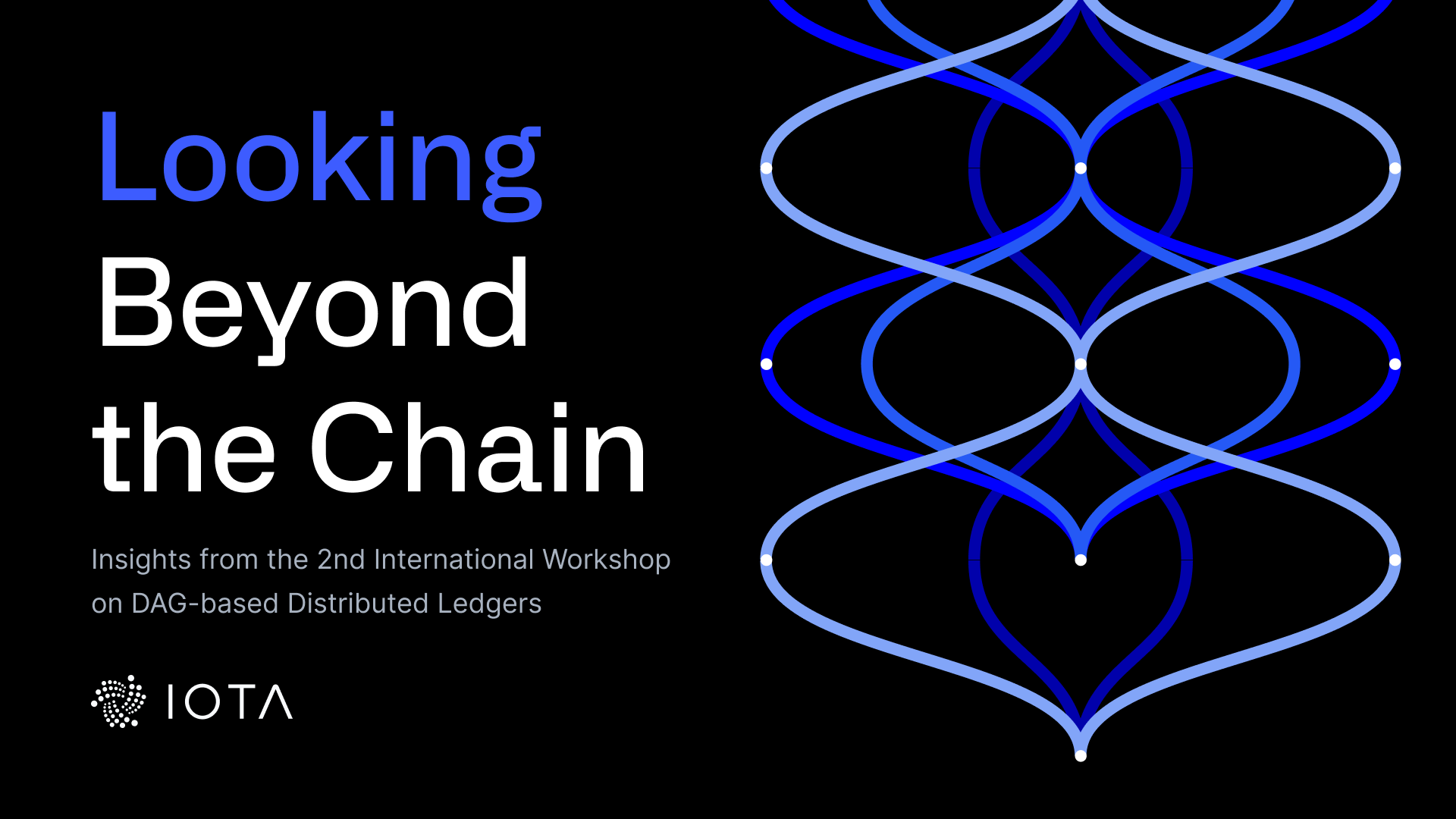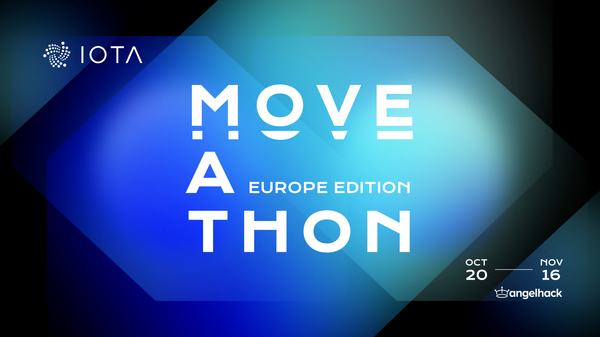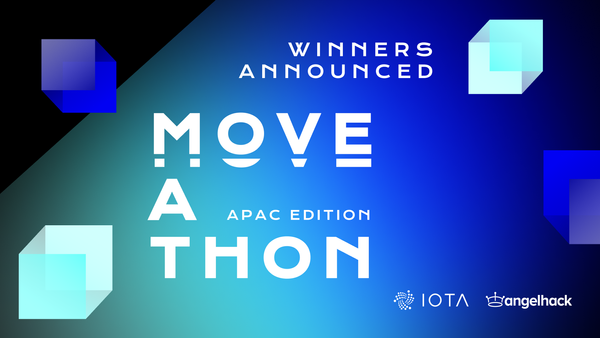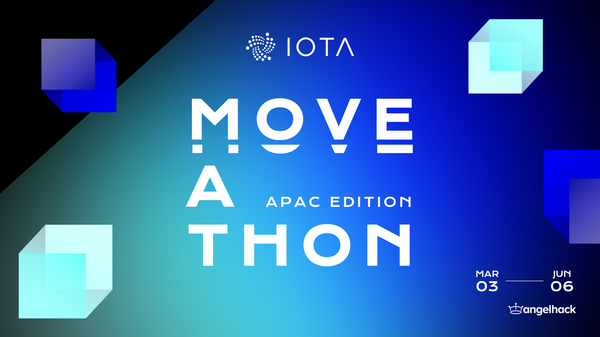Looking “Beyond the Chain”
Insights from the 2nd International Workshop on DAG-based Distributed Ledgers
TL;DR:
The Beyond the Chain workshop on May 31, 2024, at Trinity College Dublin explored how DAG technology can overcome blockchain limitations. Shai Wyborski's keynote emphasized DAG's efficiency and scalability benefits over traditional blockchains. Presentations covered topics like secure IoT data transmission, shared objects in Sui smart contracts, name management using IOTA, and a study on DAG-based consensus protocols.
Solving the limitations of traditional blockchain with Directed Acyclic Graph (DAG) technology is the focus of Beyond the Chain: Workshop on DAG-based Distributed Ledger Technologies. Featuring contributions by several IOTA Foundation members, this year’s edition was held on Friday 31st of May, 2024 at Trinity College Dublin as part of the IEEE International Conference on Blockchain and Cryptocurrency, which ran from 27 May 2024 to 31 May 2024.
Despite taking place on the last day of the IEEE Conference, our workshop attracted a good crowd with surprisingly few signs of conference fatigue! The session was kicked off with a keynote by Shai Wyborski (@DesheShai), a researcher at Kaspa, a PoW- and DAG-based distributed ledger technology. Shai’s keynote was followed by four presentations based on papers written for the conference: we’ll present the abstracts of these papers after a quick recap of Shai’s keynote.
From Blockchain to DAG
In his keynote, Shai highlighted the critical need to transition from traditional blockchains to DAG structures, addressing the inherent limitations of blockchains regarding efficiency and scalability. Blockchains suffer from high orphan rates and reduced parallelism, undermining their performance.

In DAG-based distributed ledgers, or “blockDAGs”, each block can reference multiple previous blocks, creating a more complex but efficient DAG structure. Shai provided an insightful overview of various blockDAG implementations like SPECTRE, Tangle, and GHOSTDAG. These systems achieve scalable and secure consensus through topological sorting. He also explored the need for parameterless protocols like DAGKnight, which adapt dynamically to network conditions without predefined parameters, improving confirmation times and network performance.
Looking ahead, he emphasized the importance of creating rational miner incentives to maintain protocol integrity, exploring new models for fee markets within DAG structures, and addressing scalability through innovative consensus mechanisms.
The keynote concluded with a lively discussion between Shai and the audience. The exchanges reflected a shared belief that these advancements could propel blockDAGs, and DLTs in general, to new heights.
Interactive Sessions
Following the keynote, the conference featured four interactive sessions that were based on research papers submitted to the workshop.
Secure Transmission of Immutable Data for Low-Power, Long-Range Wireless IoT Services
In the first session, Andreas Baumgartner from Chemnitz University of Technology discussed his paper co-written with his colleagues Nada Akkari, Sudip Barua, and Thomas Bauschert: “Secure Transmission of Immutable Data for low-power, long-range Wireless IoT Services”. According to the paper’s abstract:
“In this work, we propose a network hierarchy to enable low-power IoT services applying the DAG-based DLT IOTΛ Streams on top of the low-power wide-area network (LPWAN) protocol LoRaWAN. For LPWAN technologies, the challenges for applying distributed ledger application layer protocols are the small payload sizes and duty cycle regulations with open frequency spectrum protocols and the transport protocol limitations in massive-machine-type mobile communication protocol derivations (e.g. NB-IoT). For low-power embedded end devices, additional challenges may arise in terms of local computation limitations, which can be a limiting factor in performing necessary Distributed Ledger (DL) protocol-related functions at the device level (e.g. hashing, encryption) to maximize DL-related technology benefits end-to-end. In this paper, we show the concept of a scalable, feeless, low-power communication solution for reliable and secure data transmission and processing in sensor networks employing the DL technology IOTΛ based Streams protocol together with the LPWAN protocol LoRaWAN and demonstrate our design for the use case of a smart metering application.”
We'll share a link to the paper as soon as it's made available by the conference organizers.
A Study on Shared Objects in Sui Smart Contracts
Shared objects – data structures that multiple transactions or smart contracts can access and modify concurrently – were the focus of the next presentation, by IOTA Foundation’s Roman Overko. According to the abstract of his paper, “A Study on Shared Objects in Sui Smart Contracts”:
“In many smart contract architectures, every contract or object is mutably shared by default. The Sui smart contract platform bears the unique feature of distinguishing between shared and owned objects. While transactions operating on shared objects require consensus to sequence reads and writes, those involving only owned objects are independent and may bypass consensus; thus, the latter are less prone to this throughput bottleneck. However, it may not always be possible or desirable to avoid using shared objects. This article aims at identifying and investigating decentralized applications that require shared objects. Utilizing the Sui Rust SDK to query programmable transaction blocks, we analyze the frequency of transactions involving shared objects, shared resource contention levels, and most “popular” applications that contain shared objects. The presented results are reproducible and show the extensive usage of shared objects in Sui, low contention levels, and moderate dependency among shared objects in atomic transactions. This novel study of shared object use cases in a relatively new smart contract platform is important for improving the efficiency of such object-based architectures. This work is relevant for smart contract platform designers and smart contract developers.” Roman’s paper is publicly available here.
Name Management Using IOTA
Teppei Okada from Ritsumeikan University, Japan, presented his paper written with Noriaki Kamiyama (also from Ritsumeikan University), “Name Management Using IOTA”. The paper’s abstract states:
“Information-centric networking (ICN) has received wide attention as a next-generation network. Unlike conventional IP networks, which forward packets based on IP addresses, ICN packets are sent based on the name of the contents which are cached to the routers involved, and then delivered to the consumer. Since any participating party can upload content to the ICN, the risk of a content poisoning attack (CPA) is ever-present. In CPA, an attacker degrades the cache efficiency by uploading fake content under a real name posting as a legitimate publisher. As a countermeasure to CPA, many existing methods determine the legitimacy of content using digital signatures with public keys, and alerts routers of unjustified content upon detection. However, it is difficult for them to detect fake CPA attacks that use public keys of fabricated content to generate digital signatures. Most methods also lack counter-measures to spoofed fake CPA attacks, in which the certification authority that manages the public key or its staff member colludes with the attacker to rewrite the legitimate publisher’s public key to the attacker’s and inject fake content that pretends to be authentic contents that are high in popularity into the cache. In this paper, we propose a method to prevent the spoofed fake CPA by managing content names with IOTA, a distributed ledger technology that blocks the tampering of content registered on the system. We also numerically compare the search time and memory requirement of four search methods that search content names managed in the ledger in the proposed method. As a result, we confirm the trade-off between the search time and memory requirement.”
We'll share a link to the paper as soon as it's made available by the conference organizers.
Systematization of Knowledge: DAG-based Consensus Protocols
Finally, Mayank Raikwar (University of Oslo) and the IOTA Foundation’s Nikita Polyanskii and Sebastian Mueller provided a comprehensive overview of DAG-based consensus protocols. Their paper’s abstract states:
“This paper is a Systematization of Knowledge that focuses on DAG-based consensus protocols in DLTs. Our study evaluates their impact on performance and their tradeoffs concerning consistency, availability, and partition tolerance, as postulated by the CAP theorem. We delineate the key functionalities and tradeoffs of DAG-based consensus protocols, highlighting iterative improvements and deviations from foundational models. Additionally, we identify research gaps and suggest directions for future work to refine DAG-based consensus mechanisms.”
We'll share a link to the paper as soon as it's made available
See You Next Year?
In conclusion, the Beyond the Chain workshop showcased the dynamic evolution of DAG-based DLTs, emphasizing their potential to address traditional blockchain limitations. The workshop underscored the importance of continued exploration and development in this field. As we move forward, the insights gained from this workshop will undoubtedly play a pivotal role in shaping the future of DLTs. We look forward to seeing you at next year’s workshop, held at the University of Pisa in June!




